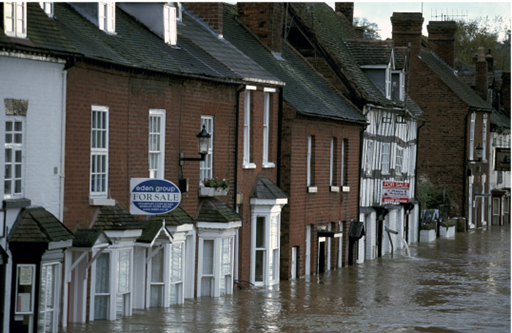5 The UK approach to the problem of flooding
In the UK, there have been three strands in the government’s the approach to dealing with flood risk:
- flood management. In recent years, this has shifted from keeping water out to a policy of making space for water as you saw in Video 1. This increases the conflict between using flood plains to contain water and using them for residential housing.
- land use. The planning system takes into account advice from government environmental agencies which is invariably to avoid building on land at risk of flooding. However, planning authorities and developers do not have to follow this advice and, as you saw in Section 2.1, in 2016-17, 11 per cent of new residential properties in England were being built in areas at high flood risk.
- Private flood insurance (bundled in with home insurance). The financial consequences of homes flooding are managed through households taking out home insurance and private insurer paying out when flooding occurs. For this system to work, it is essential that households have access to affordable flood cover.
By 2013, this three-stranded approach was under serious strain. In this section you will consider why that was the case and what action the UK government took.

